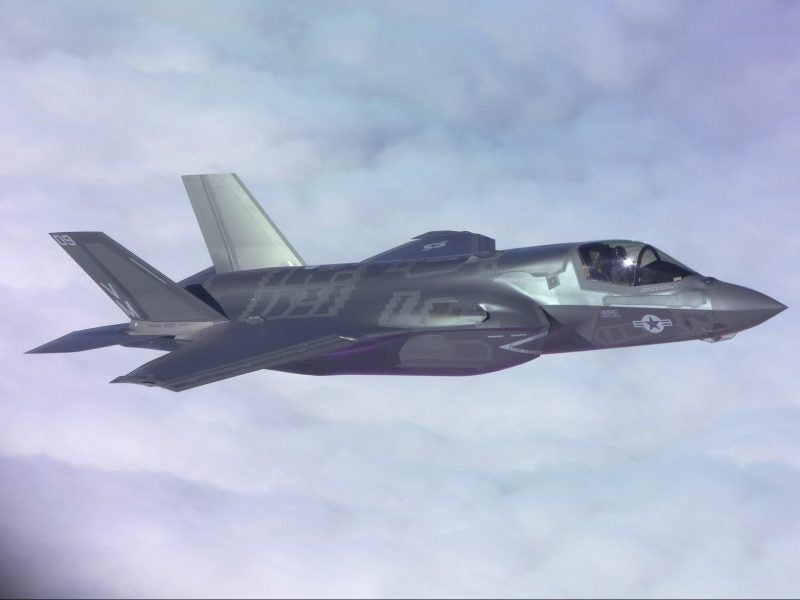
The F-35 will not enter full-rate production for at least 13 months, according to US Undersecretary of Defense for Acquisition and Sustainment Ellen Lord.
The US Department of Defence (DoD) acquisition head told reporters at a press briefing that the DoD is in discussion with Lockheed Martin to negotiate the aircraft’s next production lot of 478 aircraft.
Lord told reporters: “On F-35 production, we reached a handshake agreement with Lockheed Martin and continue to negotiate on the next F-35 lot buy for 478 aircraft. I won’t get into any specifics, but when it’s official, we will do a press briefing right here to announce the details.”
Lord also said that the aircraft will miss its target of hitting full-rate production this year by ‘up to 13 months’. This marks another delay for the most expensive weapons programme ever and will see the mass production of aircraft not take place until December 2020 or January of 2021.
Lord explained how the office running the F-35 Joint Strike Fighter Programme had last week signed a report ‘that documented expected schedule threshold breach in the milestone C full-rate production decision milestone of up to 13 months’.
Despite the delay, Lord explained that the DoD was still moving forward and that the delay ‘does not change what we’re doing on the production line, what we’re doing in terms of development or sustainment’.
Praising the aircraft, Lord said that the growing fleet of F-35s and continued international partnership on the programme proves it is the most advanced and lethal fighter jet to ever be developed.
The aircraft has been developed using a joint development and manufacturing time frame, however, full-rate production would significantly increase Lockheed Martin’s output of the aircraft.
The programme has seen several operational milestones, including British F-35Bs – the short take-off vertical-landing variant – recently taking off from the UK’s HMS Queen Elizabeth aircraft carrier off the coast of the US.
Lord also offered an update on Turkey’s ongoing involvement in the programme after the country was barred from buying the jets in response to Ankara’s purchase of Russian air-defence systems. In July, the US expelled Turkey from the programme, however, manufacturing of several components still takes place there.
At the time, Air Force Technology reported that Turkey’s expulsion could increase the total cost of the project by about 10%, and Lord said: “Since early 2017, when Turkey began publicly discussing its interests in the Russian-made S-400 system, all levels of the US government have consistently communicated that the F-35 and the S-400 are incompatible.
“As other US officials and I have clearly said, Turkey cannot field a Russian intelligence-collection platform in proximity to where the F-35 programme makes, repairs and houses the F-35.”
Lord said at the press conference: “Turkey still makes 900 parts for the F-35 and will continue to do so until Turkey’s F-35 supply chain responsibilities transfer at the end of March 2020.”
She added that the ultimate decision to cut Turkey from the supply chain would ultimately rely on Lockheed Martin finding a new supplier for the components made in the country.



